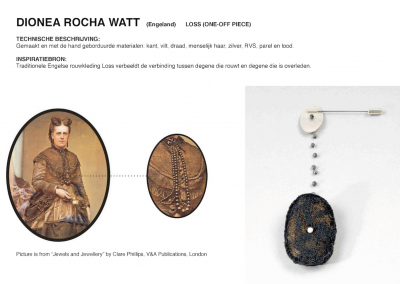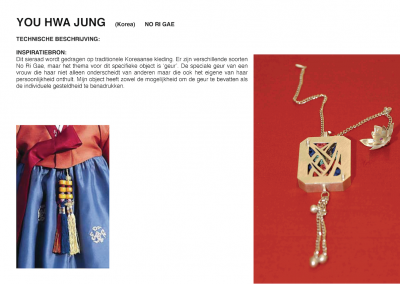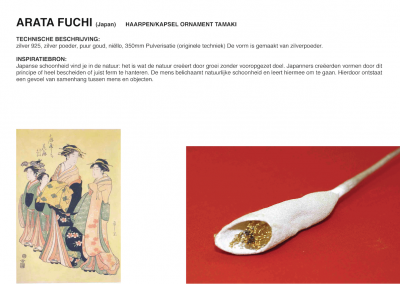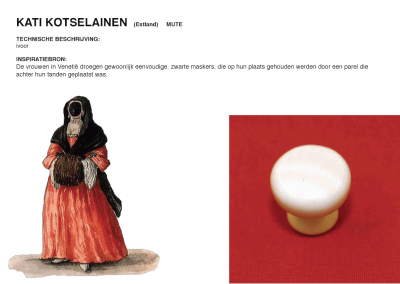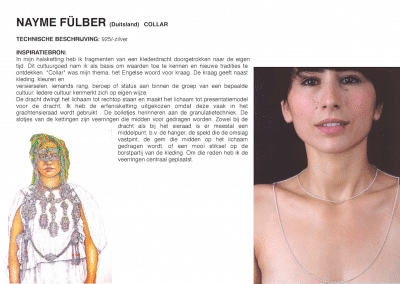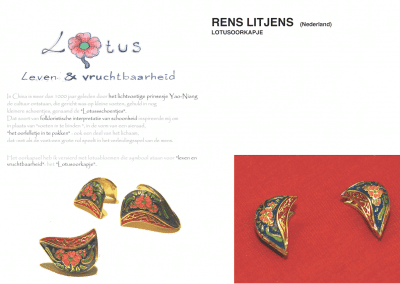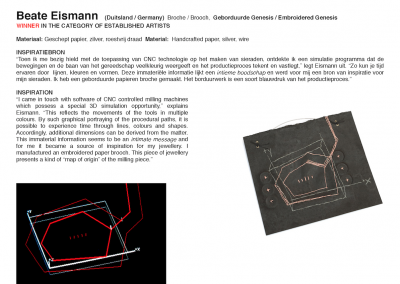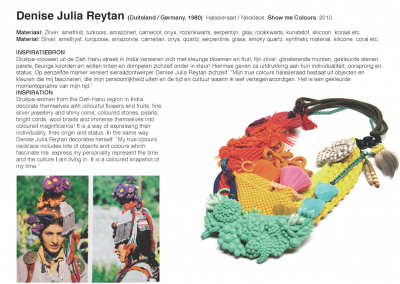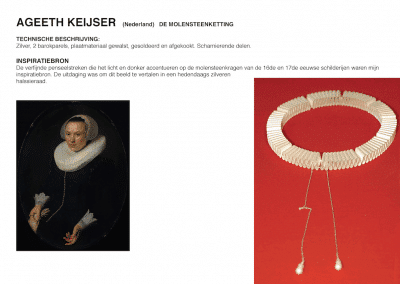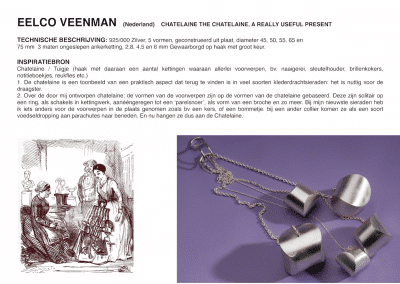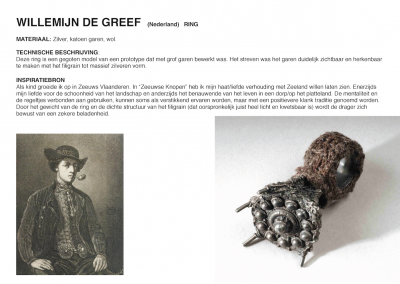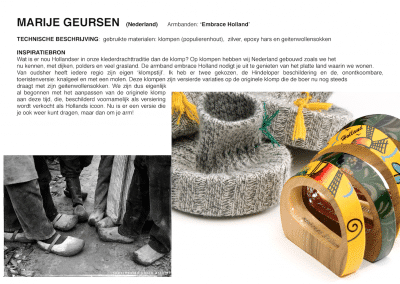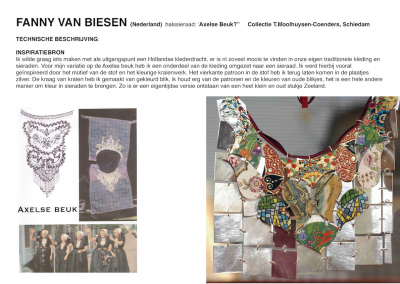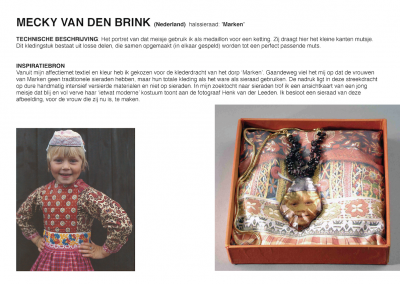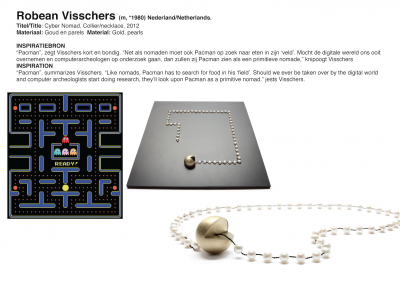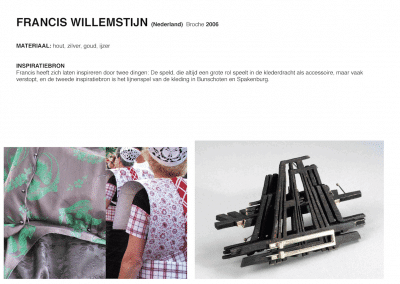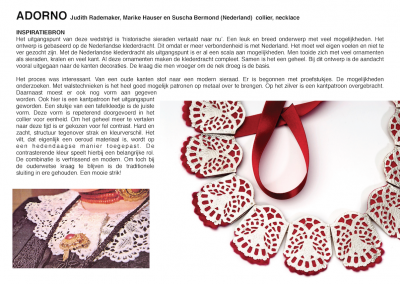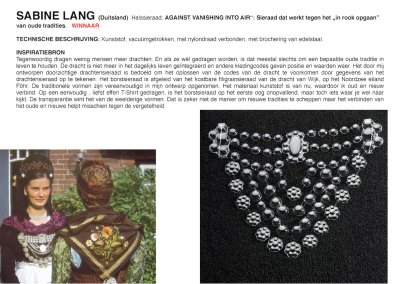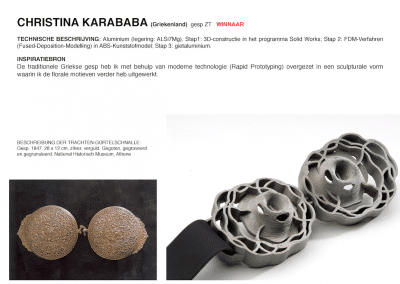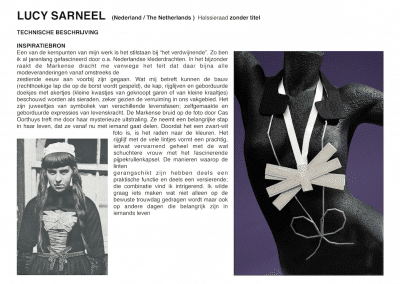2006 Folklore
Folklore – a relevant theme to this very day.
First design contest builds a spectacular bridge between past and present.
NTJ2006: Folklore and the premiere of New Traditional Jewellery
All over the world costume traditions, family ties, ceremonies, rituals and feast days go hand in hand with specific jewellery. Everywhere and in all times this jewellery has conveyed a social message and represented an economic status. These types of symbol bearers tend to disappear from the street scene; with luck these artefacts end up in a museum. High time, therefore, to devote the first NTJ to the basis of jewellery design: ornaments that are part of folklore and costume traditions, no matter where in the world. The theme selected is still relevant. NTJ2006: Folklore asked jewellery designers all over the world to make jewellery design relevant to them and forming part of a folklore, their starting point for the design of a new version made by them. More than two hundred jewellery artists from all parts of the world have drawn inspiration from this theme. The result was a truly impressive collection of pectoral ornaments, necklaces, collars, caps, rings, buckles, arm ornaments and a lot more.
The theme ‘folklore’ fits in with the current development in art and design. A revaluation of folklore is part of the counter reaction to mass production, overconsumption, short product cycles, exploitation of nature, expansion and the adage ‘more is better’. The theme invited artists to explore roots, crafts, old techniques, use of material and the language of symbols, and come up with new symbol bearers. At the same time this is the core of NTJ: the contest stimulates an active dialogue with the past by having new wearable objects of art be the bridge between history and the present. And this is precisely what all participants in NTJ2006: folklore had in common: they added a new, contemporary and simply spectacular chapter to the long history of jewellery from folklore and age-old costume traditions.
Carin Reinders: dir. CODA Museum Apeldoorn
Fred W. Brom F.G.A. ; Steltman jewellery in The Hague
Herman Hermsen ; Jeweller and Professor für Schmuck- und Produktdesign Fachhochschule Düsseldorf University of Applied Sciences
Isabella van den Bos ; creative development T.T.G. ‘collector jewellery’
Astrid Berens: Dir. SIERAAD Art Fair
Anne Berk ; author en artcritic Kunstbeeld / Financiële Dagblad
The theme fits in with the current developments in art.
The 20th century was characterized by innovation. It seemed pos- sible to engineer social changes, and (art)history would show a linear development to reach an ever higher level.
In the field of jewellery design plenty of experimentation went on with new (preferably base) materials, whereby artists aimed at elementary forms and plain use of materials, just as in the plastic arts. The ornament was an autonomous form closely related to the body. In the middle of the 80s the tide turned. History turned out to be of a cyclic nature: past and present are not chapters that are closed – the past affects the present, which is also evident in the art of jewellery.
Artists rediscover the past and derive patterns and decorations from historical jewellery and costumes. They apply the decorations using new techniques and materials, or create new forms with the help of ancient techniques. In the past ornaments stood for more than just decoration, they were heirlooms or amulets – bearers of a symbolism which contemporary jewellery artists are reinterpreting.
International cross-fertilization
Even though opinions may vary on this subject, traditional costumes are the products of a constant international cross-fertilization, to which the New Traditional Jewellery contest adds another chapter. It stimulates an active dialogue with the past.
Winners
IN THE CATEGORY OF ESTABLISHED ARTISTS THREE WINNERS HAVE BEEN SELECTED:
The jury feels that Schmedding has found an intriguing balance between theme, idea and execution.
With her “Against vanishing into thin air” Lang puts the breast-plate back into everyday life, the jury states.
Her Porpi 2 has been executed in cast aluminium. Openwork forms reminiscent of a 3D reproduction of the hilly landscape around the village of Porpi in northern Greece. Karababa brings together technique, origin and tradition of great sculptural value, according to the jury.
With this almost minimalist necklace Nuis has added a new chapter to the tradition of mourning jewellery, says the jury.

